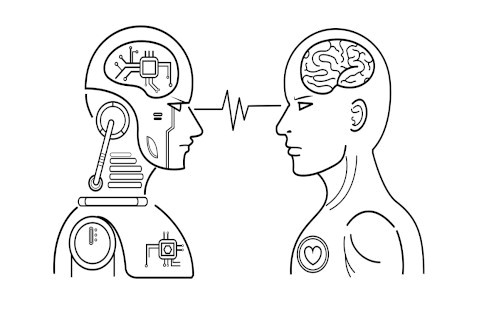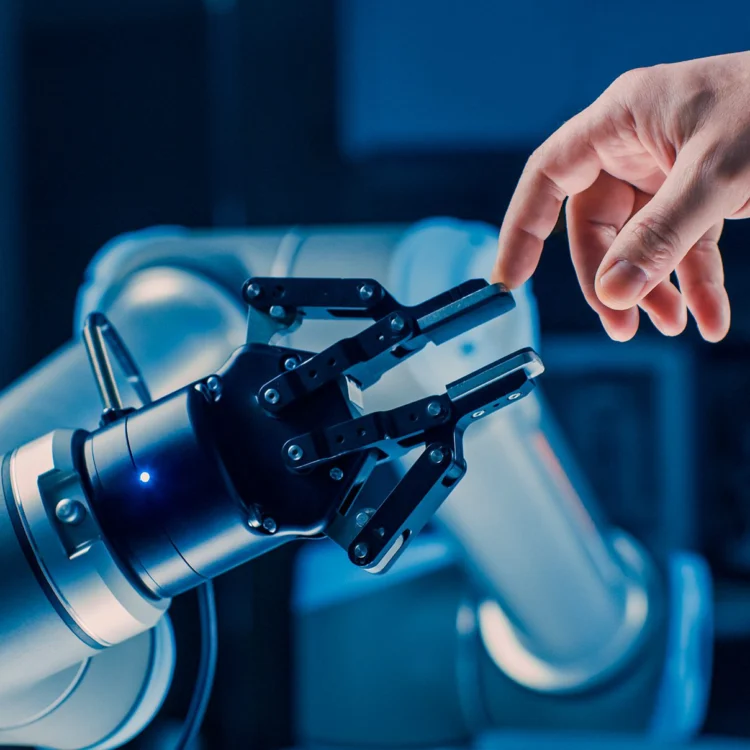Introduction: The Rise of Wearable Robotics
Technological innovation is extending human physical abilities beyond their biological limits. Powered exoskeletons — wearable robotic systems — are transforming industries such as healthcare, construction, military, and logistics by augmenting strength, endurance, and mobility. These devices are no longer confined to research labs; they are entering real-world applications, redefining what humans can do physically.
This article explores how exoskeletons and related technologies are enhancing human capability, their societal impact, and the ethical considerations of physical augmentation.
1. Understanding Exoskeleton Technology
1.1 Types of Exoskeletons
Exoskeletons can be categorized based on purpose:
- Industrial Exoskeletons: Reduce fatigue and prevent injury in manual labor jobs by assisting lifting and repetitive motion.
- Medical/Assistive Exoskeletons: Aid mobility for people with spinal injuries, stroke recovery, or muscular degeneration.
- Military/Combat Exoskeletons: Enhance soldiers’ strength and endurance, allowing heavier loads and longer missions.
1.2 How They Work
Exoskeletons typically combine:
- Mechanical structures that align with human joints
- Sensors to detect user movement and intent
- Actuators powered electrically, hydraulically, or pneumatically to assist motion
Some advanced exoskeletons integrate AI and machine learning to adapt support dynamically, learning from the user’s movement patterns to provide seamless augmentation.
2. Physical Capability Enhancement
2.1 Strength Augmentation
Exoskeletons amplify human strength, enabling lifting of heavy objects with minimal effort. In industrial contexts, this reduces workplace injuries and increases productivity. In military applications, soldiers can carry heavier gear without compromising mobility.
2.2 Endurance and Fatigue Reduction
By distributing load and providing mechanical support, exoskeletons reduce strain on muscles and joints, extending endurance. Workers or soldiers can maintain peak performance for longer periods, improving efficiency and safety.
2.3 Mobility Assistance
For medical users, exoskeletons restore walking and balance capabilities. Patients with spinal cord injuries or neurological disorders can regain independent movement, dramatically improving quality of life.
3. Applications Across Industries
3.1 Healthcare and Rehabilitation
Exoskeletons are pivotal in physical therapy. Robotic-assisted walking aids patients in regaining strength and motor coordination. Early intervention and repetitive, guided movement promote neuroplasticity, accelerating recovery.
3.2 Industrial Efficiency
In manufacturing, logistics, and construction, exoskeletons minimize workplace injuries and musculoskeletal disorders. Workers experience less fatigue, enabling longer shifts and higher productivity without increased risk.
3.3 Military and Defense
Soldiers equipped with exoskeletons can carry heavier equipment, march longer distances, and sustain higher performance. These systems have potential to reduce injuries and enhance operational capability, but also raise ethical questions about augmented combatants.
3.4 Everyday Life
Emerging consumer exoskeletons promise applications in mobility assistance for elderly populations and personal strength augmentation for physically demanding tasks.
4. Technological Advancements Driving Human Augmentation
4.1 AI Integration
AI algorithms optimize exoskeleton performance, predicting user movement and adjusting assistance levels in real-time. This makes devices more intuitive and less cognitively demanding to operate.
4.2 Lightweight Materials and Energy Efficiency
Advancements in carbon fiber, titanium alloys, and soft robotics have reduced exoskeleton weight, enhancing usability. Efficient battery technology extends operational time, crucial for industrial and military applications.
4.3 Biomechanical Interfaces
Sensor technology now allows direct reading of muscle signals (EMG) to drive actuators, enabling seamless synchronization with human motion and making augmented movement feel natural.

5. Ethical and Societal Considerations
5.1 Accessibility and Equity
Widespread adoption raises questions of who can access these technologies. If only certain populations can afford physical augmentation, it could widen social and economic disparities.
5.2 Safety and Regulation
Exoskeletons must meet strict safety standards. Over-reliance on mechanical support could cause injuries if devices fail, and long-term health effects are still under study.
5.3 Human Identity and Enhancement
Physical augmentation challenges notions of natural ability. Societal perception of strength and capability may shift, raising philosophical and ethical debates about fairness in competitive contexts, such as sports or labor.
5.4 Employment and Labor Implications
While exoskeletons improve worker safety and efficiency, they may also change labor expectations, increase productivity demands, or replace jobs with partially automated human-machine systems.
6. The Future of Human Augmentation
6.1 Symbiosis of Human and Machine
The next generation of exoskeletons may integrate neural interfaces, allowing thought-controlled movement and more intuitive augmentation. This could redefine human physical potential, blending biological and mechanical capabilities seamlessly.
6.2 Personalized Exoskeletons
Adaptive systems that learn from individual biomechanics will provide tailored support, minimizing risk and maximizing performance. Customization may also consider aesthetics and ergonomics, making devices more socially acceptable and comfortable.
6.3 Expanding Human Limits Beyond the Body
Physical augmentation may eventually enable abilities currently considered impossible: extreme strength, rapid mobility, or enhanced endurance for exploration in hazardous environments such as deep-sea or space missions.
7. Designing Responsibly
7.1 Ethical Frameworks
Manufacturers and designers must consider equity, safety, and societal impact. Guidelines for responsible augmentation include:
- Ensuring informed consent for medical and military users
- Developing inclusive technologies accessible to diverse populations
- Considering long-term physiological effects
7.2 Collaboration Between Stakeholders
Engineers, designers, ethicists, medical professionals, and policymakers must collaborate to create frameworks for safe and socially responsible augmentation.
Conclusion: Redefining Physical Human Potential
Exoskeletons and human augmentation technologies are transforming the very definition of physical capability. By enhancing strength, endurance, and mobility, they empower individuals across healthcare, industry, and defense.
Yet these innovations come with significant ethical, societal, and regulatory challenges. Responsible development, equitable access, and careful integration into society are crucial to ensure these technologies expand human potential safely and inclusively.
Human augmentation is not merely a technological evolution — it is a profound redefinition of what it means to be physically human, a future where body and machine work in harmony to push the boundaries of human achievement.











































